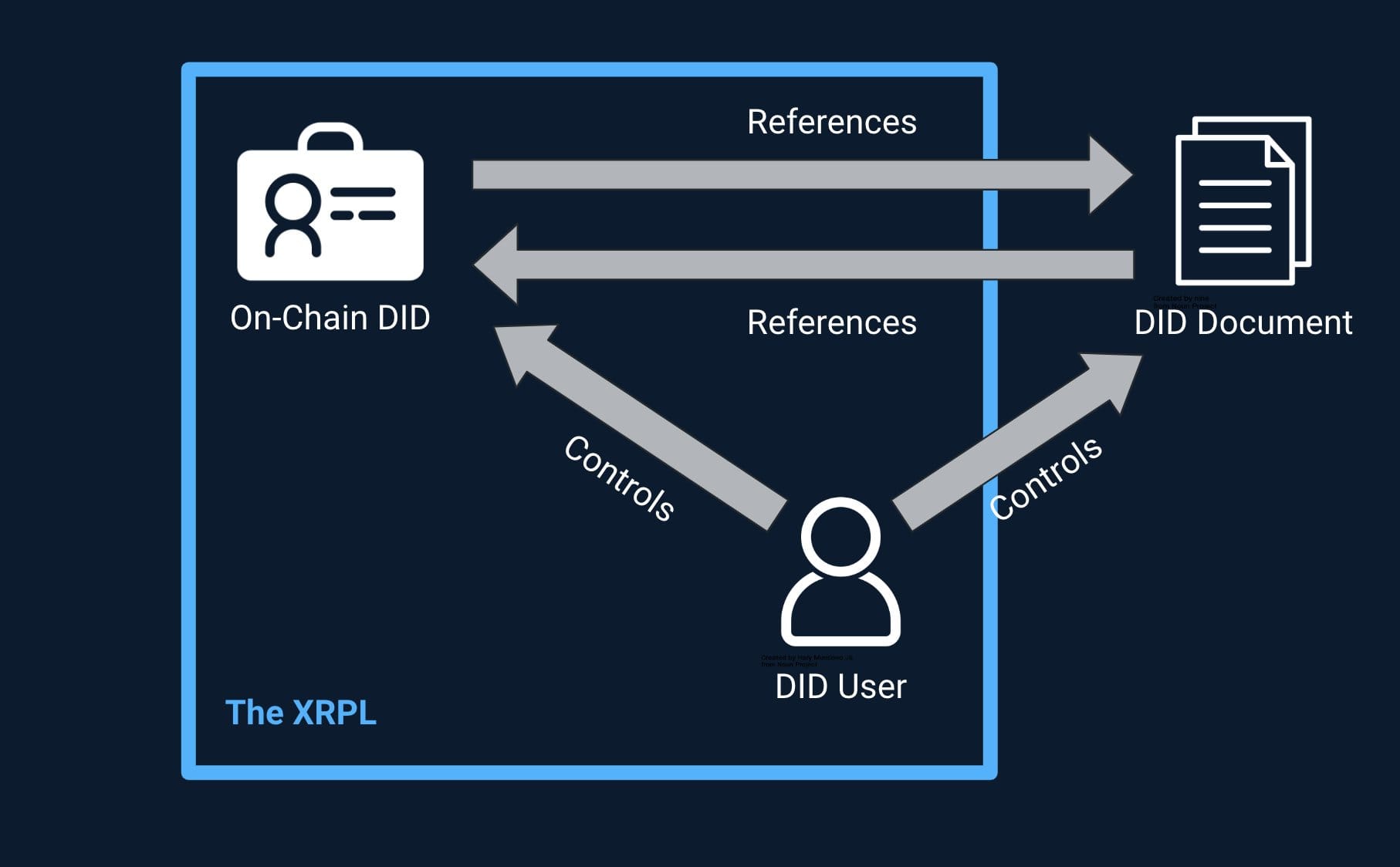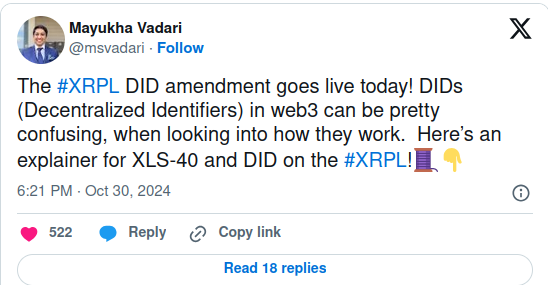Decentralized Identifiers (DIDs) are now live on the XRP Ledger (XRPL)
DID is the digital equivalent of a fingerprint; while it doesn’t have much use on its own, it allows people to identify themselves and consequently, access a diverse set of applications. XRPL’s DIDs adhere to the standards set by the World Wide Web Consortium (W3C)
he XRP community has been eagerly awaiting the introduction of Decentralized Identifiers (DIDs) in the network since they were teased earlier this year. As we reported, users of the XRP Ledger (XRPL) were excited about the prospect of secure digital identity on the network. DIDs are now a reality on XRPL after the activation of the XLS-40 DID amendment.
Mayuka Vadari, a senior software engineer at RippleX, the Ripple-associated entity that promotes the growth and adoption of XRPL among businesses and developers, revealed the launch of DIDs this week.
As Vadari broke it down, a DID is the digital equivalent of a fingerprint; while it doesn’t have much use on its own, it allows people to identify themselves and consequently, access a diverse set of applications. XRPL’s DIDs adhere to the standards set by the World Wide Web Consortium (W3C), which demands that all DIDs must be “persistent, globally resolvable, cryptographically verifiable, and decentralized, and are designed to be compatible with any distributed ledger or network.
A Brief on How XRPL DIDs Work:
An XRPL user generates the DID, which is controlled by the linked account.
This DID is associated with a DID document that contains the necessary information to cryptographically verify the user’s identity.
To use the DID, the user must combine it with a cryptographically secured verifiable credential (VC).
The two are resolved by a verifier to prove authenticity.







